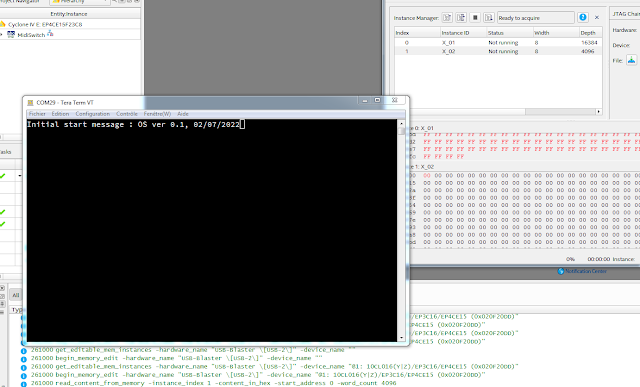December 10, 2021 :
The Drumulator that I received a few days ago and spent an hour or two on doing dreadful 'hacks' done by bad tinkerers and replacing a few circuit sockets reboots :
This is obviously not very visible in the photo, but the superb and heartwarming message "bad" is displayed. I haven't tested the sound generation system, but anyway, I have to use this board to test this generator from an FPGA implementation.
So far I have only changed the CTC and a 74LS145. By the way, it is getting quite difficult to find this 74LS145 nowadays. I bought ten. We never know ;-)
UP December 14, 2021 :
As often on Drumulators, the RESET circuit no longer works and the SRAM is no longer correctly saved. However, I did manage to RESET the machine and program sounds to each PAD. It works. So I know that the sound generator is also working, as well as the whole audio processing chain. I will definitely be able to use this machine to test my sound generator implementation!
On the other hand I have to clean all the switches because they do not respond well. One of the pads has been damaged. I don't think I will be able to get it to work normally again. Ah, what all those Sunday DIYers are !!!
UP December 16, 2021 :
As I now know this Drumulator is functional, I can prepare it for my micro waveform sequencer tests.
So I removed the two circuits which buffer the addresses generated for the sound ROMs. It is on these two new circuit supports that the address wires generated by my FPGA emulation will take place.
The most difficult being to remove these two circuits without damaging the PCB, nor the circuits because they are not very easy to find nowadays.











